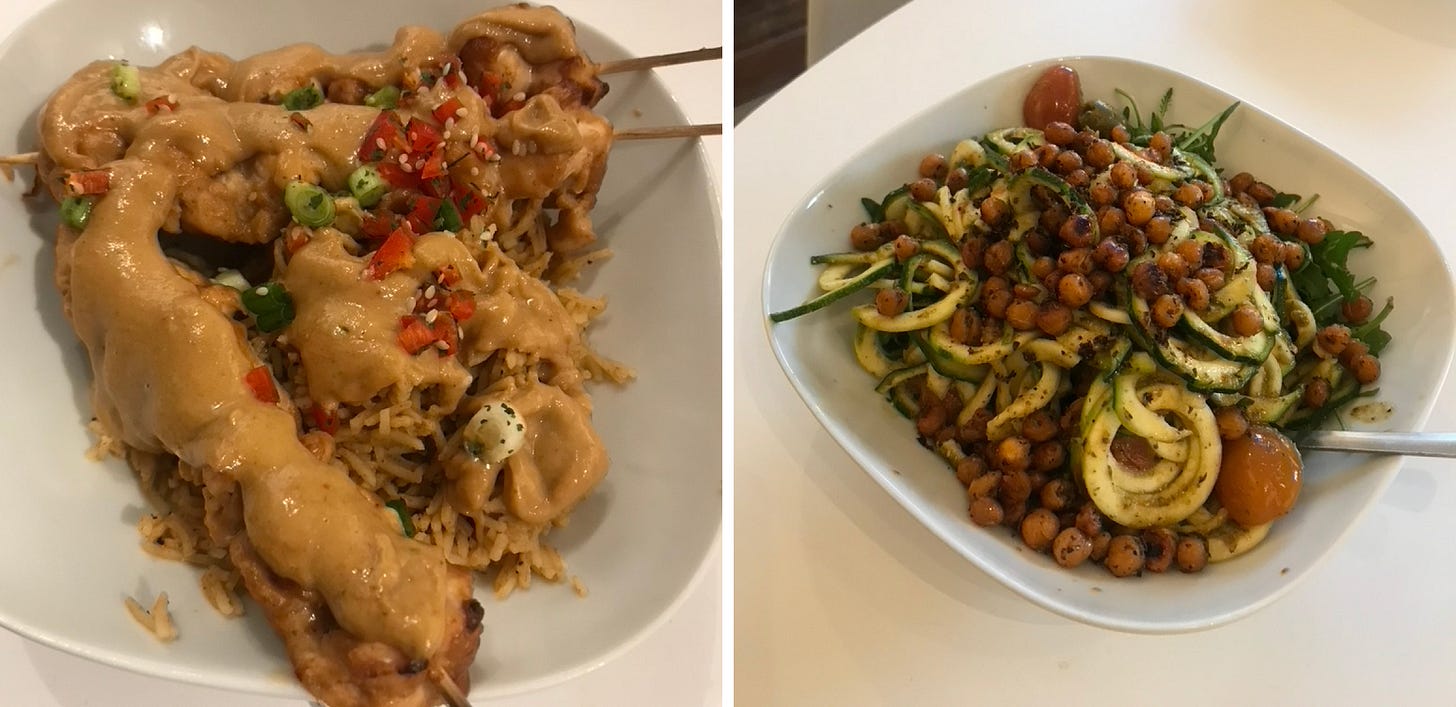🌱 The Grumpy Optimists # 43
How gaming culture can help create a climate positive narrative and change the way people engage with climate change.
Happy Monday 👋
Welcome back to the Grumpy Optimists. This week we’re looking at Greenland’s retreat from damaging oil and gas exploration, grassroots agri-ecological movements in Haiti, and how video games can help climate optimism become part of popular culture. Also, Will gives us the low-down on his first week of Veganuary - off to a strong start with some useful tips and some questionable photography.
Enjoy!
👀 Articles to read
🛢️ Greenland permanently bans all oil and gas exploration. The country has made the decision to ban oil and gas exploration, despite recently finding financially significant oil reserves, citing that the future belongs to renewable energy, with the costs of using oil far outweighing any potential economic gain.
🥒 French ban on plastic packaging for fruit and veggies begins. The ban will affect 30 products, including lemons, oranges, and cucumbers, but not larger packets. George wrote his dissertation on the challenges of companies going plastic-free, and one theme that emerged throughout from businesses themselves was the need for more legislation to force them to reduce plastic. This seems like a positive start on the journey to plastic freedom, and a change that can’t come quickly enough.
🎮 Climate is making an impact in gaming. From Fortnite dances to FIFA, gaming has a major influence on culture and social relevance. More games are starting to incorporate climate action. One great example of this is Terra Nil, a reverse city builder game, turning barren wastelands into an ecological paradise. As the Metaverse becomes a hot topic in the future of gaming, the more we see meaningful climate narratives, the better. Think fewer Sims characters left in a pool with no ladder, and more environmental rejuvenation and climate education.
🌾 “Small farmers cool the planet!” Haiti has historically been barraged by colonialism, political instability, and natural hazards, crippling its food security. Deforestation due to the colonial timber trade has exacerbated these issues, making the landscape prone to flooding, soil erosion, and agricultural degradation. Misguided foreign aid and associated resource mismanagement have only served to make things worse. The Papaye Peasant Movement (MPP), a local grassroots organisation led by women, has taken epic strides to work with 60,000 subsistence farmers to improve the nation's food sovereignty and natural environment. Aside from planting tens of millions of trees, they have worked bottom-up to establish sustainable water infrastructure, offer agro-ecology training, and install solar panels. They have even played a critical role in the response to Haiti’s earthquakes, providing shelter, food, and water to those affected.
💭 Why does this matter? You might have heard of the term “White Saviour Complex”, which is the creation of a narrative where the “developed” West knows what’s best for the “developing” world, without considering local expertise. The result can be culturally insensitive projects which risk being devastatingly counterproductive and deny any autonomy to locals. Movements such as MPP have shown how utilising local knowledge, skills and resources gets much better results, and is much better for the climate and environment.

🌍 Looking ahead: what will the highlights of climate diplomacy be this year? This article gives a helpful bird’s eye view on what to look out for as key 2022 climate milestones. The COP27 Climate Summit has particularly caught our attention. It will be hosted by Egypt and will focus on adapting and enhancing resilience to climate change risks, such as heatwaves, floods, and storms. There will be an urge to turn the pledges made at COP26 in Glasgow into tangible, outcome-based plans, and for wealthy countries to give their poorer counterparts the financial and policy support they need to respond to climate impacts and shift away from fossil fuels.
🍆 Veganuary - Week 1 / Will
I know it’s early days so forgive my perhaps premature optimism (check back in on week three), but so far going vegan has been a bit of a breeze. It definitely helps that I’ve had someone to do it with - my friend Erin and I have been shopping, cooking, and eating together, which makes the whole challenge much more enjoyable.
Biggest revelation: Vegan mayo is good, very good. A potentially permanent substitute if you ask me. Stick with Heinz though (if you know, you know). Oh, and barista oat milk in a coffee is a big win, too.
Best meal: (Fake) chicken satay skewers, with rice and a mixed spicy salsa. We used THIS Isn’t Chicken (below, left), which isn’t the best meat alternative I’ve ever used, but the punchy satay sauce was tasty and super easy to blend up. Perhaps tofu would be a good replacement.
Biggest letdown: Zoodles with pesto, rocket and roasted tomatoes and chickpeas. Probably the best looking meal we made all week, but sadly lacked a wow factor and needed a lot of hot sauce to bring out the flavour. Feels better suited as a summery-lunchtime dish, but still left us feeling pretty healthy. Stick with pasta I reckon.
Top Tip: Bulk make a savoury snack at the beginning of the week. This week we made pesto pastry spirals. They’re super tasty, perfect with a morning coffee or to keep you going through those afternoon meetings at work. One of the toughest things about going vegan is how to change your snacks to make sure you’re getting the balance of nutrition and flavour. This is a really easy way to tick off both those boxes!
That’s all from us this week folks. Do let us know if you have any content suggestions at thegrumpyoptimists@gmail.com.
The Grumpy Optimists 💚



